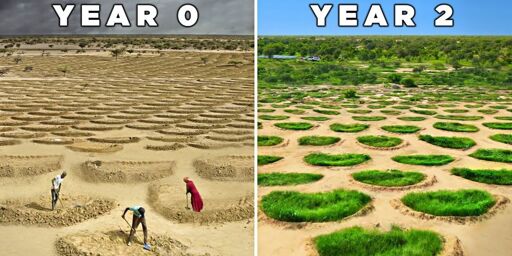Just a few years ago, the Sahel region at the northern edge of Senegal was a “barren wasteland” where nothing had grown for 40 years. But the United Nations World Food Programme (WFP) and local villagers teamed up to regreen the area, bringing back agriculture, improving the economy of the people who live there, and preventing the climate migration that desertification ultimately leads to.



I can’t say for certain, but I’ll take a stab at an answer that isn’t just “to cut costs obviously lmao”.
Part of the purpose of these ecological initiatives is to figure out ways to do things at scale without the need for industrial waste/pollution.
Second, it is best practice in most any industry to create and optimize the process by hand BEFORE figuring out how to optimize it with heavy industry. If you begin the design under the handicap of a machine, then your entire design is founded on that crutch. You can always incorporate machinery, but it’s often more difficult to remove it from any process once it’s been integrated.
I know absolutely nothing about living in the desert but I bet driving heavy equipment on sand (hard-packed or not) is a risky business.
Driving heavy equipment on sand is not that risky. We’re talking a single digger here, not a 1000t mobile crane.